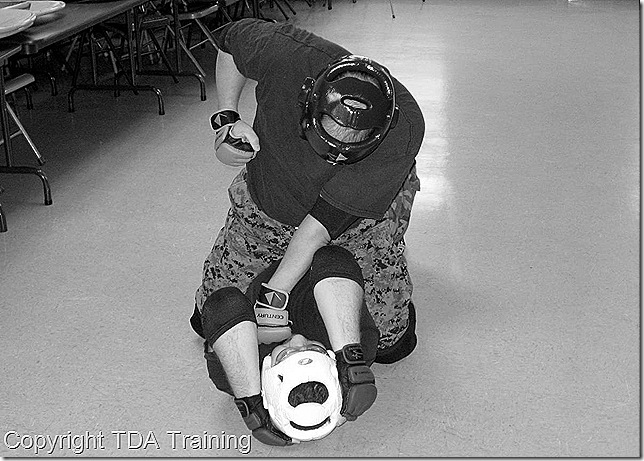
Most of us, who have any reasonable time in martial arts, will have spent much of our free time debating the perceived strengths and weaknesses of our own style of fighting, whatever it may be, as compared to our friends. Why Judo, Karate, Kung Fu, Muay Thai, Jeet Kune Do, or Brazilian Jujitsu is the ultimate art, with some maturity, turned into what are my art’s strengths and weaknesses, and how can I work around them or supplement my training. We’re seeing this all over the place: Grappling schools teach striking, almost everyone supplements their training with grappling and boxing, and almost all of watch MMA and learn something. But, wait a minute. What about what you already know? What if I told you that your style has some perfect responses for techniques and tactics that you need to know?
A previous post’s comments, on Aikido responses to the jab (or uncommitted attack) brought up the fact that most of the best responses to a given attack are within your own style – if you face that type of attack. For example:
Few Taekwondo-type kicking attacks are better handled than by a TKD stylist. I had a short exposure to competition TKD fighters, and have nothing but respect for them. Can they punch, grapple, or defend a knife like I could? In most cases, no, but I had so much trouble in their world with their techniques, that I had to take off my hat to them. I had to learn their responses, given the rules of their engagements, and just apply them
The comments in the post mentioned are related to boxing. When in close, there are few ways better to handle a hook than with a straight, or a jab with a hook or overhand. Uppercuts and body punches are a great source of joy to me, in particular. I’ve learned many responses to those techniques from outside of the sport of boxing, but most are no better, and in most cases, leave one more vulnerable to a boxer. I think we can all find those examples in our own styles.
Now, back to reality: The operative terms in my suppositions that all styles may have their own perfection only apply in those circumstances particular to the common practice of said style. I’ve railed against some of the sport techniques that are just ineffective, or worse, dangerous outside of the sport venue and away from the supervision of an officiating agent with a rulebook. My personal philosophy is to learn what will and will not work, and spend most of my time practicing what will really work against likely attacks. Many of you are the same. In order to get to the point where one can be effective, you need to learn from someone who can build the skills that you want, and in most cases that person will come from a coherent system. Learn it, love it, and own it before you dismiss it. My bet is that you never will.

4 comments:
And even better if you can find an instructor that will work with what you bring to the table. Most good ones will! Things like old injuries, age, the inability to pull certain techniques off, EVER. e.g. if, after a couple years someone just can't pull of that high outside crescent with knock-down power, maybe that person would be better served perfecting what they can do, moderately well!
While you are still contemplating on which ones will work or not, you should by now be able to decide which fighting stunts really work. It is however basically the same but you still have to decide for the best.
I'll go for the mastering of basics and fundamentals.
Strong foundations and structures are the ones that really count even in real world situation.
Bob- I agree. An instructor should adapt what he/she teaches to what a student is able to learn, whether due to age (youth included), and aptitude. That should include the right arrows in the quiver of a given style or system at the right time. I like how you're adapting yourself, however, to what you perceive as your strengths. And how you're open to new styles.
Darrel and Michael, thanks for the comments.
Post a Comment